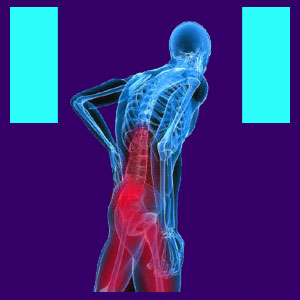
Weak legs, in association with a back or neck pain diagnosis, are usually theorized to be caused by some form of stenosis in the central spinal canal or within the neuroforaminal spaces. However, leg weakness can come about due to a great number of spinal, muscular and non-back pain related causations, as well. Therefore, it is crucial to make sure to receive proper diagnostic testing to rule out other disease and injury processes which may actually be responsible for lower body weakness symptoms.
This study examines leg weakness and how it may be related to dorsalgia conditions that affect the spine and surrounding musculature.
Leg Weakness and Sciatica
Sciatica is the term used to describe any combination of spinally-motivated pain, weakness, tingling or numbness in the buttocks, legs and/or feet. Sciatica is not a diagnosis in itself, but instead, is a symptom of another causative condition in the spine. Leg weakness from a sciatica syndrome is virtually always diagnosed as being due to one of two common sources:
Foraminal stenosis, enacting a pinched nerve, can cause objective numbness and weakness in defined areas of the leg, when the loss of patency occurs in the lumbar or lumbosacral spine. Foraminal stenosis is one of the most misdiagnosed of all back pain explanations. Most suspected cases do not present symptoms which accurately demonstrate pathological proof of the condition. If foraminal stenosis is actually to blame for weakness in the legs, the patient is unlikely to have chronic back pain, leg pain or tingling. If objective numbness and weakness exist exclusively, then a pinched nerve may well be to blame.
Spinal stenosis, enacting cauda equina compression, can cause pain and a full range of neurological symptoms, including weakness in the legs. Spinal stenosis can be a diagnostic nightmare, since it can enact symptoms in the legs, no matter where in the backbone it exists. Many sufferers have cervical spinal stenosis, but still endure symptoms in the lower body. These symptoms are most often mistakenly blamed on other coincidental spinal abnormalities, like lumbar herniated discs.
Alternate Causes of Weak Legs
Pseudo-sciatica can also cause leg weakness and might result from muscular and nonstructural causes that are not sourced in the spinal column, such as piriformis syndrome.
Muscular conditions can cause pseudo-sciatica and often involve weakness in one or both legs. These conditions can be tricky to accurately diagnose and may be due to imbalances in matched muscular pairs, leg length discrepancies, fully-formed sciatic nerve compression or localized injury to the soft tissues.
Disease process can make the legs feel weak. There are many acute and chronic conditions that can affect the neuromuscular anatomy. Since the legs require great strength to perform their basic physical functions, it is no surprise that they become targets for many disease processes.
Be advised that tension myositis syndrome may also create similar weakness symptoms, regardless whether an anatomical irregularity exists or not. Mindbody leg weakness as an exclusive symptomatic expression is rare, but in combination with pain, paresthesia and numbness, it is commonplace.
Treatment for Weak Legs
Just remember that many structural causes for leg weakness are misdiagnosed in a great number of patients, including foraminal stenosis and spinal stenosis. Although the physical indications of the condition may surely exist, they are unlikely to produce significant or lasting symptoms in most patients. Even when the diagnosis is sound, they may be other contributing factors to the symptomatic expression, or additional levels of stenosis that may be the true cause, while the diagnosed region is coincidental. We see this occurrence often with cervical stenosis being the real culprit, while lumbar spinal abnormalities are unfairly blamed and unsuccessfully treated.
Sudden onset of weakness or numbness may be a sign of a serious spinal condition, such as cauda equina syndrome. Make sure to report all such matters to your doctor immediately.




